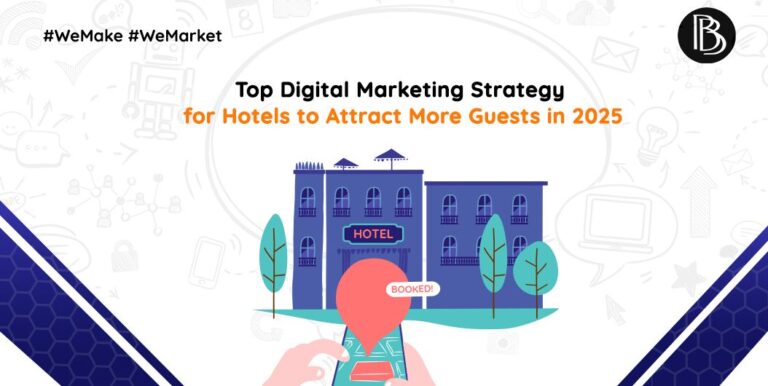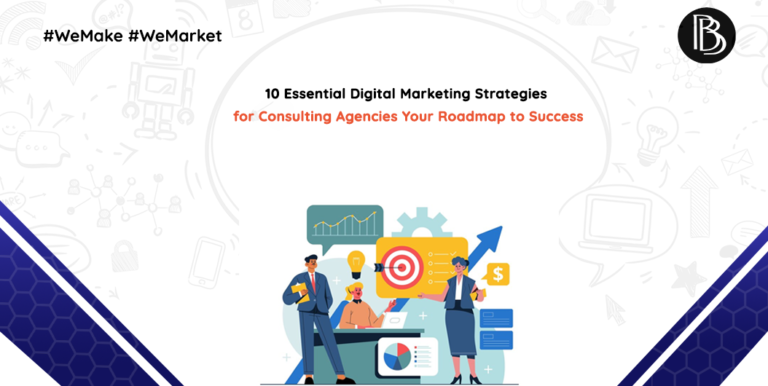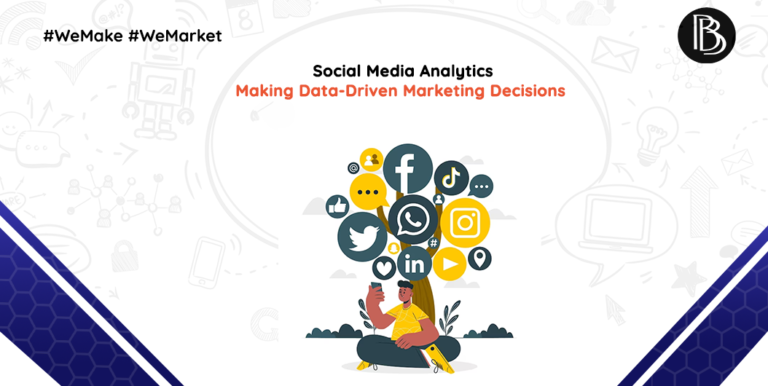Digital Marketing Trends to Watch Out for in 2025
The field of digital marketing is changing quickly, and it is crucial for businesses to keep up to stay in the race. As we approach the year 2025, the introduction of new trends and technologies is transforming how marketing is done. This shift makes it necessary for companies to rethink and adjust their strategies to meet these changes head-on. To succeed in this lively and ever-changing market, it is essential to understand the latest trends in digital marketing. Knowing what is coming will help businesses make smart decisions and plan effectively for the future. By staying informed about these latest digital marketing trends, companies can harness new opportunities and connect better with their audiences in 2025. Let’s explore the key digital marketing trends that will shape the future and provide valuable insights for those looking to excel in this environment.
Why Digital Marketing Trends Matter?
Digital marketing trends are crucial for any business aiming to succeed in 2025. Understanding these trends goes beyond just keeping up with the latest news. It is about taking action and staying competitive in a crowded space.
Enhance customer engagement: When businesses tap into current trends, they can greatly enhance how they connect with customers. This means creating meaningful interactions that build trust and loyalty.
Improve brand visibility: Being aware of trends helps improve a brand’s visibility. In a noisy world, it’s crucial to make your voice heard. Businesses that adapt to what is popular or gaining traction will be more likely to catch the eye of potential customers. This increased awareness can lead to more traffic, more inquiries, and ultimately, more sales.
Drive higher ROI: Driving a higher return on investment (ROI) from marketing campaigns is another key benefit of staying on top of trends. When companies know what tactics and platforms are working, they can allocate resources more effectively. This strategic approach helps ensure that every dollar spent has a better chance of bringing in profits. Staying ahead of these trends means your brand will stay relevant.
A brand that shifts with consumer preferences and market changes will resonate better with its audience. It shows that the brand understands its customers’ needs and is willing to adapt. Embracing these trends creates a stronger connection between the brand and its audience, leading to lasting success.
Top Digital Marketing Trends in 2025
AI-Driven Marketing
Artificial Intelligence (AI) is changing the way marketers approach their work. In 2025, tools powered by AI will take center stage, providing businesses with the ability to personalize experiences, gain insights in real time, and make decisions automatically. This shift means that marketing strategies can become more sophisticated and tailored to individual needs.
How to Leverage AI:
- Implement AI-driven chatbots: Implement AI-driven chatbots for 24/7 customer support: AI-driven chatbots are one major application. These tools can offer customer support around the clock. They engage with customers instantly, answering questions and resolving issues without delay. Enhancing customer satisfaction is just one benefit; it also allows human resources to focus on more intricate responsibilities.
- Use AI tools for predictive analysis: Another key aspect of AI in marketing is predictive analytics. This technology helps businesses understand how customers behave. By analyzing data, companies can anticipate future actions. This insight allows for the creation of marketing campaigns that truly resonate with target audiences, meeting their specific needs and desires.
- Automate email marketing campaigns: Automated email marketing is also transforming how companies connect with their customers. With AI technology, businesses can send out personalized emails that reflect individual preferences and behaviors. This level of customization increases engagement and improves conversion rates.
In conclusion, AI is reshaping marketing through tools that enhance personalization, provide vital insights, and streamline decision-making processes. Businesses that adopt these technologies will be better positioned to engage their customers effectively and maximize their marketing efforts.
Voice Search Optimization
Voice search optimization is becoming essential as more people use smart devices like smartphones and smart speakers. This shift in how users search online requires businesses to adapt their content strategies. By optimizing for voice search, companies can tap into the growing number of inquiries made through voice commands. This growing trend impacts how consumers find information, services, and products.
Tips for Voice Search Optimization:
- Use natural language and question-based keywords: To effectively optimize for voice search, businesses should focus on using natural language in their content. Many voice searches are phrased as questions, so including question-based keywords is crucial. Phrases like “what is,” “how to,” and “where can I find” are common in voice queries.
- Focus on long-tail keywords: Another important aspect is targeting long-tail keywords. These are longer, more specific phrases that match how people speak. For example, instead of just focusing on “pizza,” a business might target “best pizza place near me.” This approach helps capture the more detailed requests users make.
- Optimize for local SEO: Local SEO is key for voice search, as many voice queries include location-based terms. Users often search for businesses near them when using voice commands. Therefore, optimizing content for local searches increases the chances of being found by nearby customers. This includes using local keywords and ensuring that business information is accurate across online listings.
By implementing these strategies, businesses can better connect with their audience through voice search. This shift is not just a trend; it’s a fundamental change in how consumers seek information. Adapting to this new method of searching will be vital for staying relevant and competitive in the digital market.
Video Marketing Evolution
Video marketing is going through significant changes. Short-form videos, live streams that allow interaction, and immersive 360-degree videos are changing how brands reach their audiences. This shift is crucial as brands seek new ways to connect with viewers. Platforms like Instagram Reels, and YouTube Shorts are now vital tools for engaging with younger audiences. These platforms thrive on quick, engaging content that captures attention instantly.
Video Marketing Strategies:
- Create engaging short-form content: To succeed in video marketing, brands need to create short, captivating videos that fit the style and audience of each platform. Each platform has its unique vibe, so understanding what works best is essential.
- Use interactive videos to boost engagement: Interactive videos are another powerful tool. These videos not only entertain but also encourage viewers to participate, making them feel more connected to the content.
- Invest in high-quality production: Investing in high-quality video production is equally important. A polished, professional look enhances a brand’s image and builds trust with viewers. Quality matters; people are drawn to videos that look good and sound great. By focusing on these strategic elements, brands can effectively connect with their audience and stand out in the crowded video space.
Sustainability-Focused Marketing
Sustainability has become a priority for many consumers today. People are increasingly aware of their impact on the environment and are making choices that reflect their values. Brands that actively promote eco-friendly practices can connect more effectively with these environmentally conscious audiences. This is not just a trend; it’s a shift in how consumers think about what they buy and the companies they support.
How to Showcase Sustainability:
- Highlight green initiatives in campaigns: To effectively showcase sustainability, brands should focus on several key areas. First, it’s essential to highlight green initiatives in marketing campaigns. Sharing stories about efforts to reduce waste, conserve energy, or engage in ethical sourcing can attract customers who care about these issues. Presenting authentic examples of sustainable practices can create a strong bond with the audience.
- Use sustainable packaging: Additionally, using sustainable packaging is another critical step. Brands can choose materials that are recyclable or biodegradable. This effort should not only be reflected in the product design but also communicated clearly in marketing materials. Transparency about sourcing and production methods helps build trust and shows consumers that the brand genuinely cares about the environment.
- Partner with eco-conscious influencers: Partnering with eco-conscious influencers can further amplify these messages. Working with individuals who share a commitment to sustainability can help reach wider audiences. These influencers can authentically promote the brand’s eco-friendly initiatives, making the message more relatable and impactful.
By taking these steps, brands can effectively communicate their dedication to sustainability and resonate with consumers who prioritize eco-friendly choices. This approach not only supports the planet but also enhances brand loyalty and drives customer engagement.
Augmented Reality (AR) Experiences
Augmented Reality (AR) experiences are changing the way customers interact with brands, particularly in the realm of e-commerce. This technology allows consumers to have a more engaging shopping experience. With AR, customers can virtually try on clothes or see how furniture looks in their space before making a purchase. This helps to ease the uncertainty that often comes with online shopping, making it feel more similar to traditional in-store experiences.
Implementing AR in Marketing:
- Offer AR-based virtual try-ons for products: Implementing AR in marketing can take various forms. One effective approach is offering AR-based virtual try-ons. For instance, customers can see how an outfit looks on them without ever needing to visit the store. Similarly, people can visualize how a new couch or table fits in their living room, helping them make better decisions.
- Use AR filters on social media: Another way to use AR is through social media filters. Brands can create fun and interactive filters that allow users to engage with products in a playful way. This method not only boosts audience engagement but also encourages sharing, leading to greater brand visibility.
- Integrate AR into apps or websites: In addition, integrating AR into apps or websites can provide truly immersive experiences. Users can explore products in greater detail, interact with them, and see them in action, all from the comfort of their own homes. This technological shift is paving the way for a more interactive and informed shopping journey, ultimately enhancing customer satisfaction and loyalty. As AR continues to develop, it will likely play an even bigger role in shaping the future of retail experiences.
Privacy-First Marketing
With the rise of stricter data privacy laws across the globe, companies are facing new challenges in how they handle consumer information. In this evolving landscape, it is essential for businesses to adopt a privacy-first approach to marketing. A focus on ethical data practices and transparency will become vital for fostering trust among consumers by 2025. This shift is not just a trend; it represents a fundamental change in how brands and customers interact.
Privacy-First Marketing Tips:
- Be transparent: Creating trust starts with being open about how data is collected and used. Customers deserve to know what information is gathered and for what purpose. Companies must communicate clearly about their data practices. This transparency can help build confidence and ensure customers feel secure in their relationship with the brand.
- Use cookie-less tracking solutions: In addition to transparency, businesses should explore cookie-less tracking options. As browsers phase out third-party cookies, companies need alternatives to gather insights on customer behavior without intruding on privacy. These solutions allow businesses to track engagement in a way that respects consumer rights.
- Focus on first-party data: Another critical strategy is to concentrate on first-party data. This means gathering information directly from customers, such as through surveys, purchases, or website interactions. By focusing on this type of data, companies can create more personalized experiences while maintaining ethical standards. Building strong customer relationship management (CRM) systems is also vital. These systems help organize and analyze customer interactions, leading to more effective and respectful marketing efforts.
In summary, privacy-first marketing is essential for future success. By promoting transparency, exploring new tracking methods, and prioritizing first-party data, businesses can build lasting relationships with customers in a privacy-conscious world.
Stay Ahead with These Digital Marketing Trends
As we look toward 2025, the world of digital marketing is on the brink of significant change. Emerging digital marketing trends promise to redefine how businesses connect with their customers online. Among these shifts, privacy-first marketing stands out. This approach prioritizes consumer privacy while still allowing brands to engage meaningfully with their audiences. Companies that successfully integrate privacy concerns into their marketing strategies will gain consumer trust and loyalty.
Navigating this new terrain requires adaptability and forward-thinking. Businesses that focus on these innovative trends will not only maintain a competitive edge but also foster deeper and more authentic relationships with their customers.
Now is the time to consider how these strategies can enhance your brand. At Bit Binders, we focus on helping companies stay relevant and effective in this changing environment. Our services range from creating AI-driven marketing campaigns to designing immersive experiences using augmented reality. We possess the skills and knowledge to transform these trends into practical outcomes that benefit your business.
Reach out to us today to find out how we can support your brand in achieving success in 2025 and beyond. Let us help you navigate the future of marketing while making meaningful connections with your audience.







